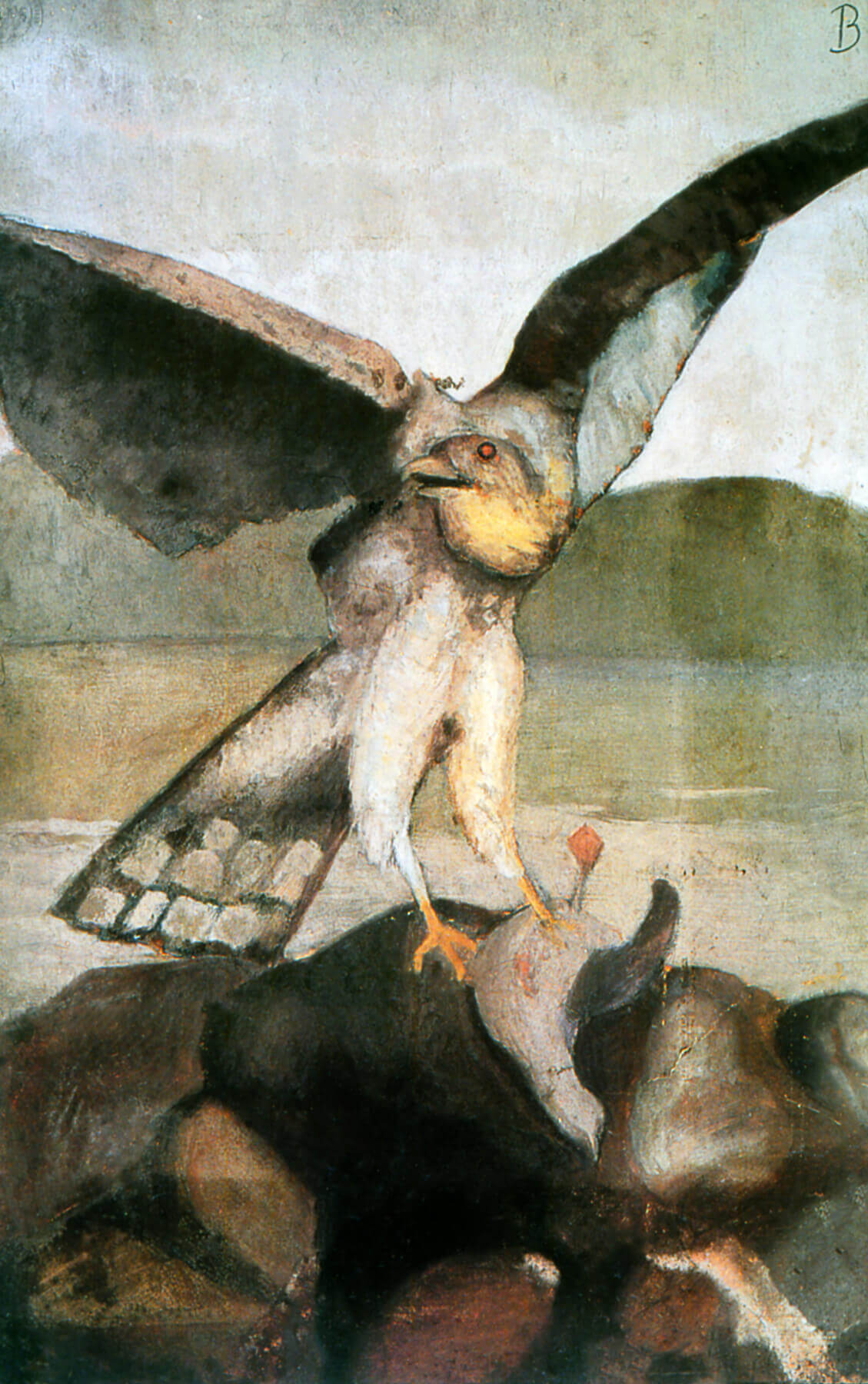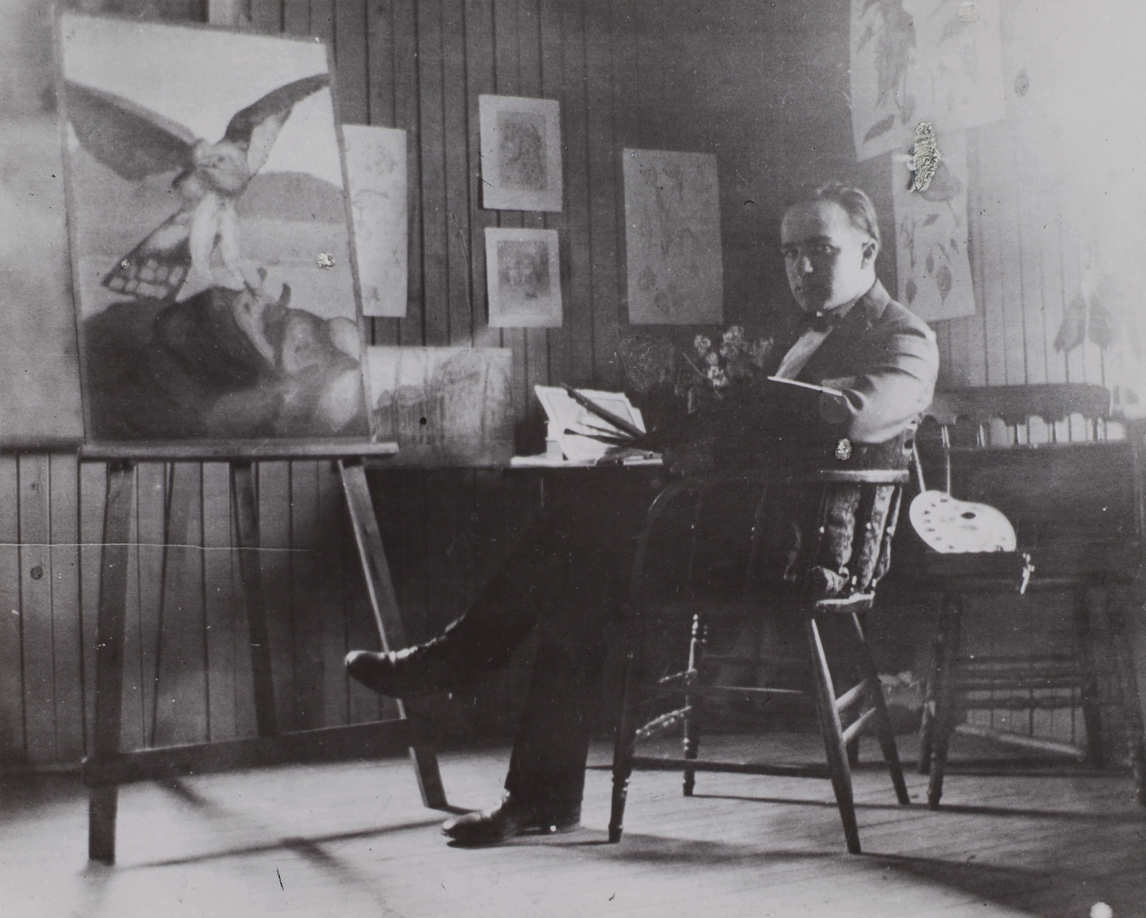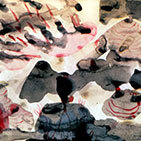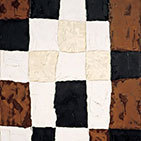Study of a Sparrow Hawk in a Decorative Landscape 1923–24

Paul-Émile Borduas, Study of a Sparrow Hawk in a Decorative Landscape (Étude d’un épervier dans un paysage ornemental), c. 1923–24
oil and pastel, 90 x 60 cm
private collection
This painting features prominently in a photograph from around 1924 of a young Borduas, palette in hand, seated in his room at the convent of Saints-Noms-de-Jésus-et-de-Marie in Hochelaga (a district of Montreal, on the eastern half of the island), where he boarded during his studies at the École des beaux-arts. Just to the right of the easel is a drawing of the exterior of the convent, and on the walls behind him drawings of plants or flowers are visible.

The school had several stuffed animals that served as models, including the sparrow hawk used by Borduas in a decorative arts class taught by Professor Robert Mahias (1890–1962). Study of a Sparrow Hawk in a Decorative Landscape is typical of the exercises that first-year students were assigned at the École des beaux-arts. The school’s aim was to train not only painters and sculptors but also skilled decorators who would find employment in the field of applied arts.
This dual orientation of fine and applied arts was defended and reaffirmed by the school’s first directors, Emmanuel Fougerat and Charles Maillard. Ultimately it would become a source of conflict with Montreal’s École du meuble, which, as its name suggests, was devoted entirely to the applied arts.

 About the Author
About the Author
 More Online Art Books
More Online Art Books
 Acknowledgements
Acknowledgements